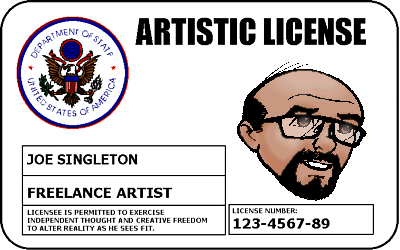|
For those of you who haven't read Robert Mayer's
SUPERFOLKS, I recommend holding off on reading this
column until you can beg, borrow, or steal a copy of
the book and read it. Consider this a SPOILER WARNING.
Superfolks is a novel written in the 1970s by Robert
Mayer. It is widely acknowledged as being singularly
influential on the work of many of today's most
popular and famous comic writers. Alan Moore, Grant
Morrison, Kurt Busiek and many others point to
Superfolks as changing their ideas of what a superhero
story could be.
The main character in the novel is David Brinkley, a
reporter for a New York newspaper who is also a
retired superhero. Interestingly, we never learn his
actual superhero code name, though he is referred to
as Indigo and the Overman, at different points in the
story. Brinkley is an analogue of Superman, his origin
and powers parallel Superman's in nearly all ways. He
is the last son of the planet Cronk, the son of Archie
and Edith, rocketed to Earth when Cronk exploded. The
explosion converted fragments of his home planet into
the deadly substance Cronkite, about which, more
later.
Brinkley grew up in Littletown, Long Island, much like
Clark Kent's Smallville, where he mooned over the
pretty cheerleader Lorna Doone. Like Clark Kent, he
had a reporter love-interest names Peggy Poole. He
fought the mad scientist Logar, Univac and Pxyzsyzygy,
analogues for Luthor, Brainiac and Mr. Mxyzptlk.
In most ways, his costume, too, mimics Superman's, but
for the white cape and purple mask. His emblem remains
a mystery, the cover illustration on the original
novel has him deliberately turned away from the
viewer. In the book, it is described as "that
weirdball emblem", by one commentator. There is a tiny
drawing on the original cover that makes it appear to
be a crcular emblem, so it's entirely possible that
it's meant to be a "O" for Overman, but we are never
told what it looks like. It is mentioned that both the
emblem and the cape are white. For Brinkley's costume,
I went for a design that would be possible to make
with needle and thread and the right cloth.

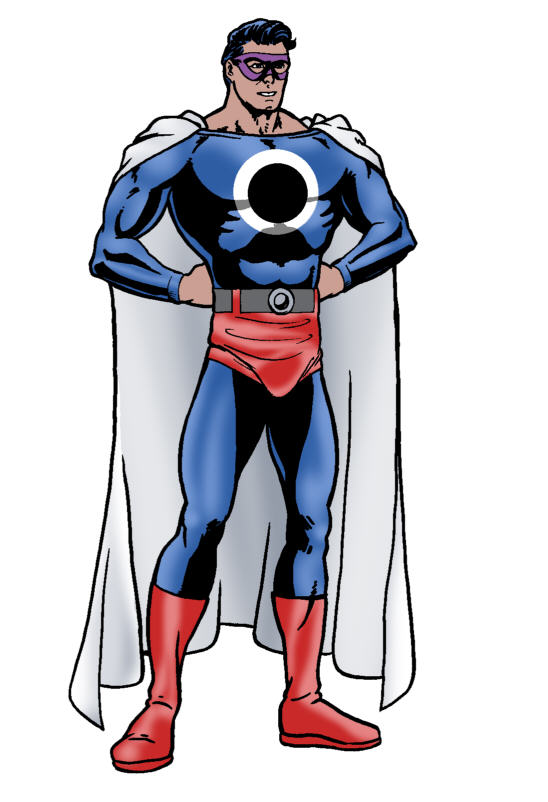
Here I've done one without any emblem, let your
imagination fill in the blank. The second image is
based on the tiny illo on the original cover and Mike
Allred's cover for the recent re-release.
When we meet him, Brinkley has been retired for
several years, following a decline in his power levels
as he approaches middle-age. We later learn that his
power fluctuations are part of a long-term plot by one
of Brinkley's foes to remove him from the playing
field. The scheme involves infusing all sorts of
everyday products with minute traces of Cronkite,
gradually weakening him as time goes on, until his foe
decides to see if he's succeeded in killing Brinkley
by funding an increase in violent street crime in New
York City, to draw Brinkley out.
We meet a crimelord called Peppy, who is also
millionaire Powell Pugh, who is behind the crime wave.
Peppy/Powell Pugh is described as being a midget in a
green, velvet suit with matching bowler.
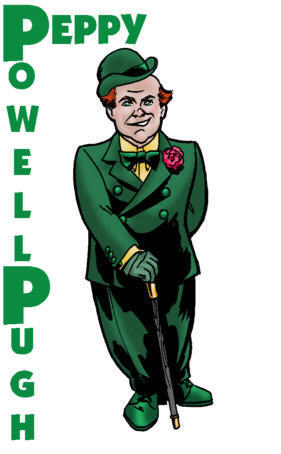
Brinkley, now a married man, with two children and one
more on the way, decides to come out from behind his
editor's desk to investigate the increase in street
crime. In the course of his investigations, we meet
other supers, including an adult Peter Pan and Captain
Marvel analogue, Captain Mantra.
Living in a sanatarium, since the death of his sister
Mary, Billy Button, Captain Matra, invites Brinkley to
jon him in retirement, but Brinkley declines. Captain
Mantra's costume is, of course, inspired by the
classic Captain Marvel suit, with the jacket, not the
tights. His nickname is "The Big Green Fruit", just as
Marvel's is "The Big Red Cheese", so obviously green
is the dominant color. Billy is described as wearing
green-and-yellow sweaters, as a kid. So, here he is,
at the moment when he speaks the magic phrase
"tomato-herring!"
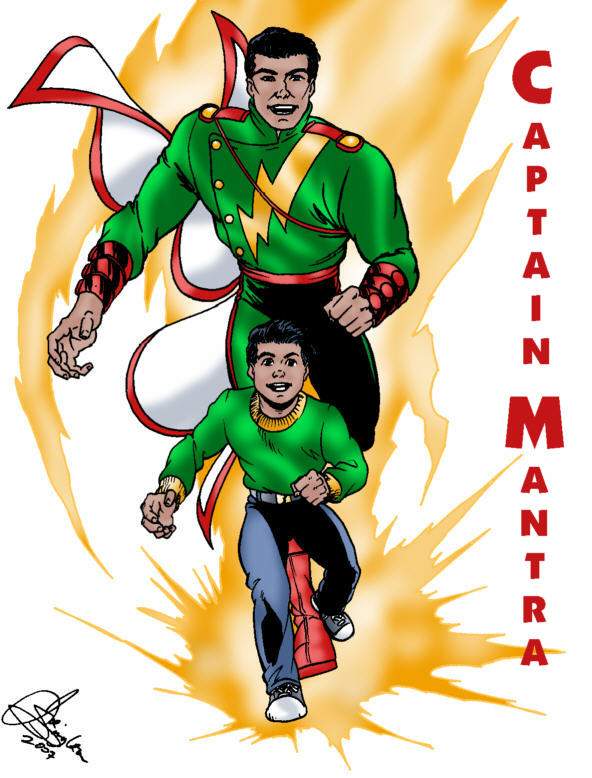
I decided on an over-the-shoulder lightning bolt, just
because I think it looks cool.
For Mary's costume, it's obvious to borrow Mary
Marvel's dress, colored to match her brother's green
uniform.

For the villains of the novel, we have Elastic Man, an
analogue of Plastic Man, who never reformed. Since
there was no clear description of Elastic Man, I
didn't do a pic of him, but he and Brinkley fight to
the death among the skyscrapers of Manhattan. In the
end, Elastic Man slingshots Brinkley into orbit,
actually saving his life and making him immensely more
powerful at the same time.
In airless space, free from the influence of Cronkite,
Brinkley is attacked by Demoniac, an analogue of Black
Adam, mixed with Captain Marvel, Jr. Demoniac is a
child of incest between Billy and Mary Button, when
they are captured by their nemesis Dr. Piranha Spock,
stripped naked and bound and gagged. In the course of
escaping, there's penetration and, well, you can guess
the rest. Demoniac is Freddy News, a newstand vendor
and bookie with a permanent limp. When he speaks his
faher's name, he changes into Demoniac.
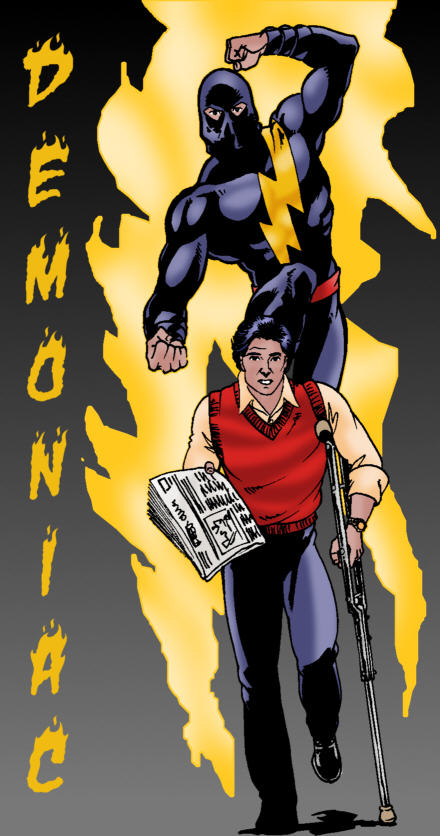
Demoniac is described as wearing a black costume with
a yellow lightning bolt, with an executioners' mask.
Brinkley and Demoniac battle across the universe,
until they reach its edge, bursting through into the
realm of dreams cast aside, or might-have-beens.
Earlier in the story, Brinkley had been given a spare
costume to wear, in place of his sweat-stained and
wrinkled old one, which he wore under a new outfit. He
strips off the outer costume to reveal a Captain
Mantra costume, Demoniac says the name in surprise and
suddenly Freddy News is drifting in space near the
edge of the universe.
Returning to Earth, Brinkley finally realizes that
there is only one of his enemies who could have been
responsible for his recent troubles, including the
plot to remove his powers. He flies to a point in
space directly in line with the constellation Pyxis,
the Earth and the sun, and spoke the name
"PXYZSYZYGY". Clearly, Pxyzsyzygy is also Powell
Pugh/Peppy the crimelord and who knows how many
others. He is described as wearing a violet bowler,
hence the second art piece in this article, as has
yellowish skin. I embellished with the violet bow-tie
and gloves.
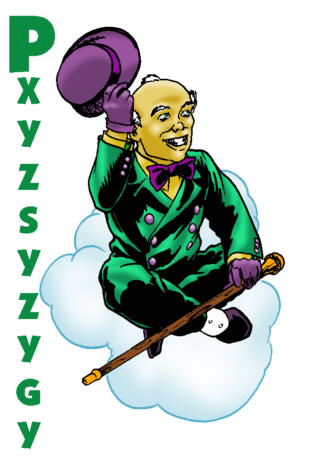
The only real problem with Superfolks is that it is
definitely tied to 1970s poular culture in ways that
could make it difficult for younger readers to grasp.
However, anyone who's read Alan Moore's
Marvelman/Miracelman, Watchmen or Whatever Happened to
the Man of Tomorrow, will recognize Superfolks as a
source for many of the story elements used in those
works. Inspiration is where you find it.
|
